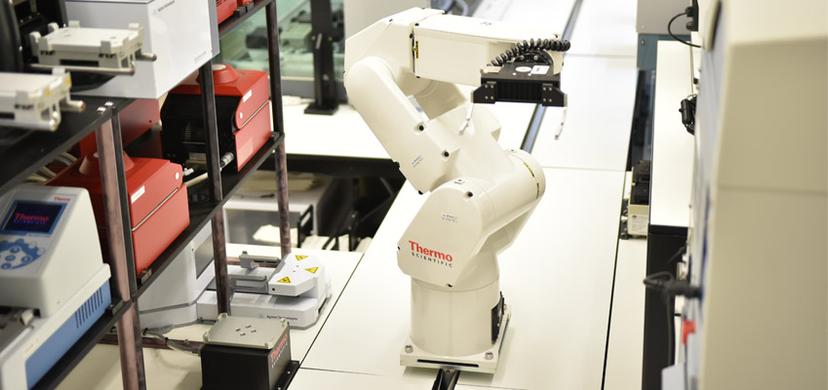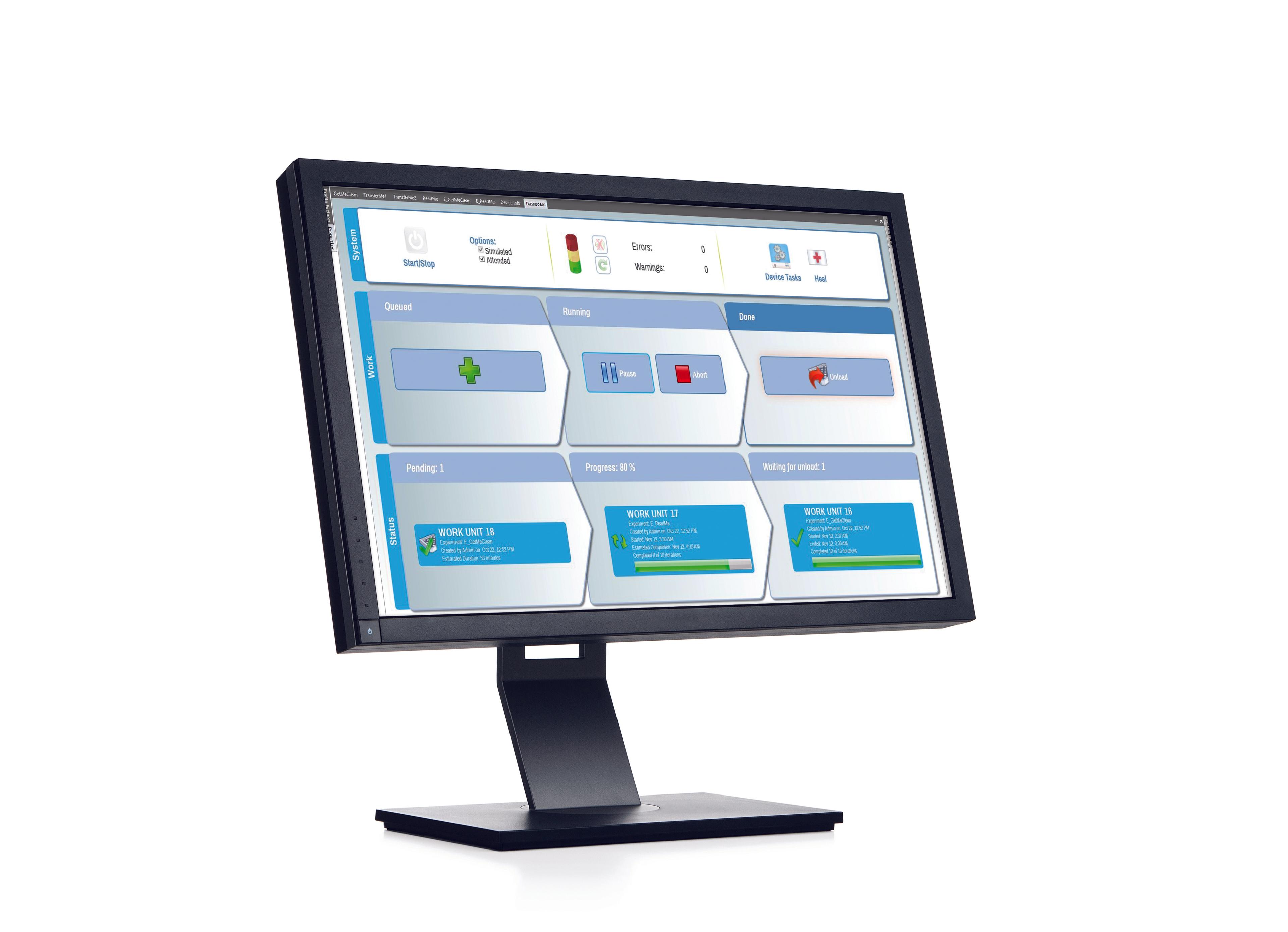Laboratories of the future: Automation and machine learning
Learn how one pioneering laboratory is leading the way in automation, and what it means for the future of research
3 Jul 2022

Laboratory automation is the future of research. Pioneering laboratories using state-of-the-art, fully automated closed-loop systems, and integrating machine learning, are showing the possibilities that it can bring.
In this article, we speak with Dr. Stephan Lane, Biofoundry Manager of the Illinois Biofoundry for Advanced Biomanufacturing (iBioFAB) at the University of Illinois, Urbana-Champaign about the iBioFAB team’s approach to automation, what they have learned since establishing the biofoundry, and what this can tell us about the future of laboratory research.
The iBioFAB 2.0
The iBioFAB was established by the Huimin Zhao laboratory in 2014 and “aims to accelerate the biological engineering process by integrating artificial intelligence/machine learning with automation.”1 This includes an articulated robotic arm that runs along a track, transferring samples within microplates to instruments. “Our very broad goal is to automate synthetic biology,” explains Lane.
After several years, the biofoundry underwent an upgrade, using learnings and technological advances to improve their use of automation and introduce new functions to the laboratory. This is the iBioFAB 2.0.
The iBioFAB 2.0 uses many different automation tools and software applications to enable automation throughout the lab. Making automation the core of their laboratory’s function has changed the way that their lab operates and the sort of work they can do. As Lane explains, “[Automation] opened a door to a lot of possibilities that weren't there before, and it changed the status quo for the lab. Previously, if a student was doing a thesis project and they were engineering 20 cell lines and then characterizing them, that was the norm. With the automation, their 20 is no longer enough – now they need 200 to meet the standard that has been set. High-throughput has become normal rather than the exception like it was before.”
Lane explains the ethos of the lab and what the aims were with the upgrade, “We try to do proof of concept work, things that haven't been done before. So, when we decided to do an upgrade, we wanted to add as much function as possible to allow those proof of concepts in new areas. When we were thinking about upgrading, we basically tried to think about all the techniques we use in the lab manually, and which of these could we automate in a high-throughput way. Our goal was to enable as many workflows as possible. How do we take things we do in the lab and make them automated and high-throughput?”
“The type of skills that you need are different from a standard synthetic biology lab when you move into automation,” Lane continues. “So, we now have an automation engineer, an electrical engineer, and a software developer. These are skills you won't normally find in a synthetic biology lab. We don't have tunnel vision, and we try to take the skills that we have available and harness them when they become useful.”

Connectivity is key
An essential aspect of an automated laboratory is connectivity between different operations. In iBioFAB 2.0 they utilize closed-loop systems to connect separate functions within a workflow and link them together through software. Connectivity in these closed-loop systems enables automated workflows, and high-throughput experiments to run.
With high-throughput experiments being the future of laboratory work, labs also need a way to analyze the large amounts of data produced. To support this, machine learning or artificial intelligence algorithms can be incorporated into the closed-loop system to enable a complete workflow that includes data analysis.
Lane gives one example of how a closed-loop system works in the iBioFAB laboratory to generate and analyze large amounts of data, “We had data from our analysis instrument, in this case a plate reader, feed directly into our machine learning algorithm, which was in Python. Using the Thermo Scientific™ Momentum™ Workflow Scheduling Software, we're able to automatically take the data output and feed it into a Python script. By connecting this to our inventory of different DNA parts, the algorithm can select which ones are going to be the most interesting, and we can assemble those again and start the process all over. Connectivity was essential for that, and everything that we did was encoded into our Momentum software workflows as well.”
Machine learning or artificial intelligence embedded within these closed-loops is essential to both make sense of the data and to inform the experiments to run in the first place. “A great example of this would be the BioAutomata, the closed-loop paper that we published2,” elaborates Lane. “This type of work described around 14,000 possible assembly combinations that could have been explored. And to try and do something like that without automation is going to be impossible. Even doing that with automation would take weeks and weeks just because of throughput limitations. By mixing automation with machine learning, we're able to take the best of both worlds and explore, not every single possibility, but a subset, so we can then narrow in on one of the best performers.”
What does the future look like for laboratory automation, and access for researchers to the tools and progress that automated laboratories can provide? “I foresee that a place like we have with our biofoundry might become prevalent at each university,” concludes Lane. “A facility that researchers can go to and rent time, or personnel to perform high-throughput studies because having a massive robot for every lab is not feasible, and it would probably be a little bit wasteful too to do that. So, a centralized facility that can handle these high-throughput assays is probably coming in the future.”
References:
The Institute for Genomic Biology. The Illinois Biological Foundry for Advanced Biomanufacturing (iBioFAB). https://www.igb.illinois.edu/iBIOFAB (accessed on 21 Jun 2022).
HamediRad, M. et al (2019). Towards a fully automated algorithm driven platform for biosystems design. Nat Commun. 2019; 10: 5150

